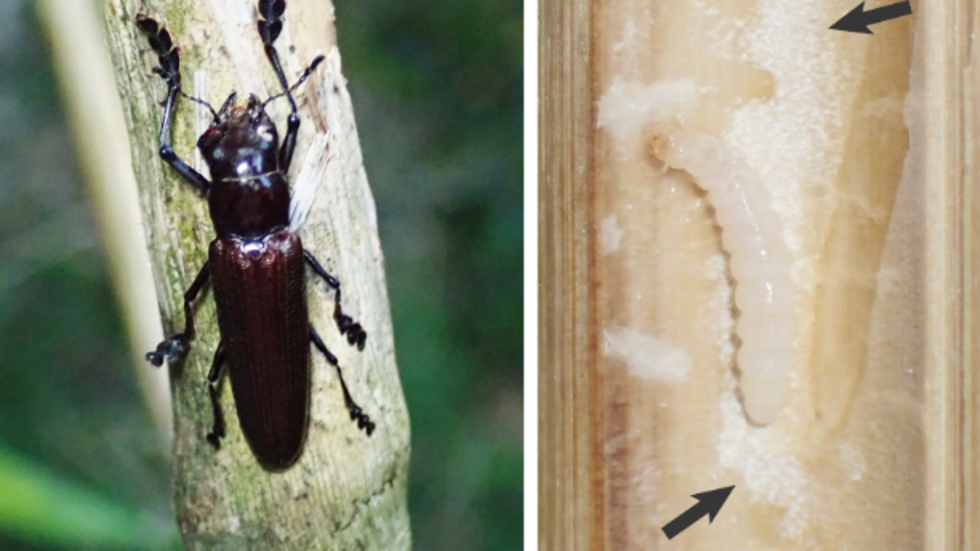
Agricultural sciences
December 9, 2021
An easy relationship between a beetle and its yeast symbiont
Lizard beetles farm yeast inside bamboo stems for their developing larvae to eat. Nagoya University scientists have now found that, contrary to other insect-fungus relationships, the job of the yeast in this one does not involve digesting the complex sugars in bamboo's woody tissues for its host.
Japanese lizard beetle larvae feed on yeast injected from their mothers' abdomens into the bamboo stems they are growing in. Now, scientists at Nagoya University have made a surprising discovery: the yeast can digest some complex sugars in the bamboo woody tissue, but it doesn't. Instead, it consumes much simpler and more available sugar sources.
"This was a real surprise," says Nagoya University bioagricultural researcher Wataru Toki. "While yeast can indeed decompose those indigestible components, our analysis shows the yeast actually grows on small molecule monosaccharides." The results are published in the journal Scientific Reports.
Female Japanese lizard beetles carry the yeast Wickerhamomyces anomalus in a specialised pocket-like organ. In spring, they dig holes in bamboo and insert their eggs and the yeast. W. anomalus grows into a sort of fungal garden that the very hungry beetle larvae munch on as soon as they hatch.
In other symbiotic relationships, fungi typically break down complex sugars into more digestible chunks that their host insects can feed on. Toki and his colleague, Dan Aoki, wanted to know whether this was also the case in the relationship between the Japanese lizard beetle and W. anomalus.
Their research suggests not. The scientists used a technique called ion exchange chromatography to analyse and compare the sugar content of fresh bamboo pith, and pith colonized by yeast alone or by yeast and beetle larvae. The comparison revealed that the yeast mostly ate the simple free sugars glucose and fructose.
This surprised the scientists because further tests showed that the yeast can actually digest some complex, indigestible sugars if necessary.
"Bamboo is not only a farm for the yeast but also a house for the larvae. So the larvae can live in a strong house safely because the house is not decomposed by the food," explains Toki.
The researchers now want to further investigate the relationship. Perhaps, they suggest, the beetle larvae grow larger inside unusually sweet bamboo, giving them a competitive advantage. The scientists also want to know how adult females distinguish free-sugar-rich bamboo to lay their eggs.
Lizard beetles plant a fungal garden inside dead bamboo stems to feed developing larvae.
(Credit: Wataru Toki)
The study, "Nutritional resources of the yeast symbiont cultivated by the lizard beetle Doubledaya bucculenta in bamboos," was published online in the journal Scientific Reports on September 28, 2021, at DOI: 10.1038/s41598-021-98733-y.
Authors:
Wataru Toki and Dan Aoki at the Graduate School of Bioagricultural Sciences, Nagoya University
Contact:
Wataru Toki
Graduate School of Bioagricultural Sciences, Nagoya University
Email: tokiw@agr.nagoya-u.ac.jp
Funding Information:
This study was partly supported by the Institute for Fermentation, Osaka (G-2018-1-034) and a KAKENHI Grant (20KK0349) from the Japan Society for the Promotion of Science (JSPS).